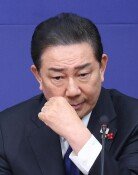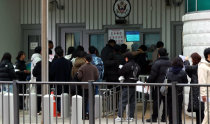Career Women in Late Twenties Doubles in 25 Years
Career Women in Late Twenties Doubles in 25 Years
Posted March. 07, 2005 22:38,
The participation rate for economically active women in their late twenties has nearly doubled in approximately 25 years.
According to a report titled The Employment Structure and Characteristics of Women, released by the Ministry of Labor-affiliated Employment Information Division on March 7, the participation rate for economically active women between the ages of 25 and 29, as of the end of 2004, is 63.7 percent.
The participation rate for economically active women in their late twenties skyrocketed from 32.0 percent in 1980, to 42.6 percent in 1990, and reached 55.9 percent in 2000.
Taking in the fact that the increase for the total participation rate for economically active women remained minor, from 42.8 percent in 1980 to 49.8 percent just last year, this escalation tendency becomes more prominent.
In the case of late teens from ages 15 to 19 for the same period, 34.4 percent decreased to one-third of the original rate, 11.3 percent, and those in their early twenties from ages 20 to 24 increased a mere eight percent, from 53.5 percent to 61.5 percent.
The Employment Information Division cited the influence of a high college admission rate of women, transformations in the business structure, and changes in social awareness concerning marriage and birth, among other factors, as the reasons.
The college admission rate of women multiplied about 2.6 times from 30.8 percent in 1990 to 79.1 percent in 2003. The difference is minuscule compared to the male admission rate of 80.4 percent in 2003. Also, the shift in the structural business due to economic growth is closely related to the changes in the participation rate for economically active women.
In the manufacturing industry and production-line business structure of the 1970s and 80s, many unschooled female laborers penetrating into society, but with the onslaught of the service industry such as finance and service-related jobs from 1990, the injection of highly-educated women in professional areas such as medicine, law, teaching, and administration, is burgeoning.
Sources at the Employment Information Division forecasted that the economically active female participants in their late twenties will continue to flourish for the time being.
Jong-Hoon Lee taylor55@donga.com






![화장실 갇혔을 때 생존법…“최후에는 변기뚜껑” [알쓸톡]](https://dimg.donga.com/c/138/175/90/1/wps/NEWS/IMAGE/2025/12/26/133042007.3.png)
